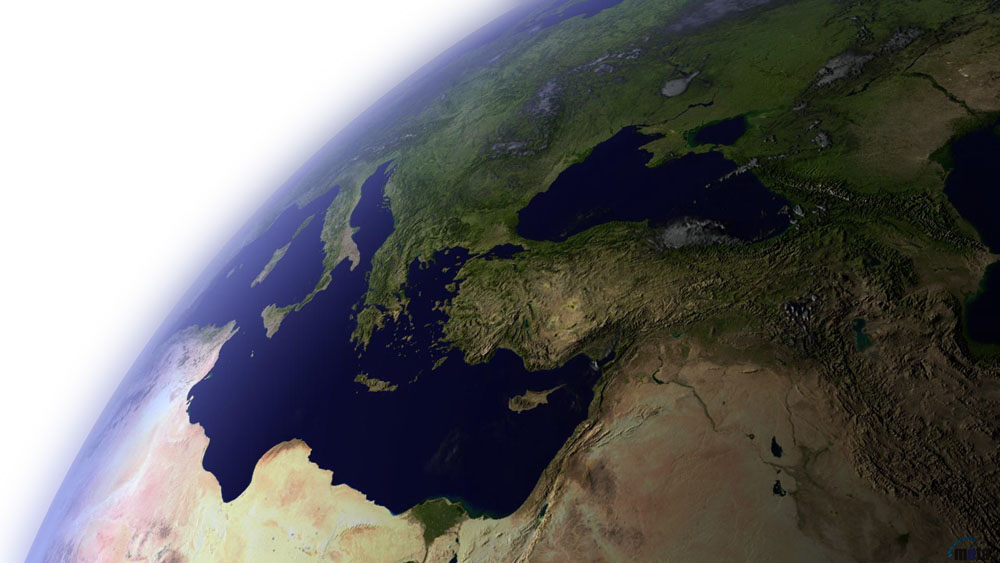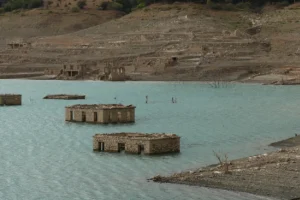In 1967, Malta’s Ambassador to the United Nations, Arvid Pardo, called for an international conference to devise a new law of the seas. In this call, he referred to the oceans as “the common heritage of mankind.” Fifteen years later, on December 10, 1982, nearly 120 countries signed the new United Nations Convention on the Law of the Sea (UNCLOS), thereby ending one of the lengthiest and most significant international conferences of the modern era.
Part V of that Convention (and more precisely Articles 55 to 75) provides for an “Exclusive Economic Zone” (EEZ) extending 200 nautical miles seaward from the coast. If all coastal states thus exercised their jurisdiction over their own EEZs, some 38 million square nautical miles would become their “economic patrimony. The oceans represent 71% of the total surface of the earth and that 32% of that area falls under the jurisdiction of coastal states. Consequently, inside these economic zones would lie 90% of all global fishing, 87% of all oil deposits, and 10% of all polymetallic nodules worldwide. The provisions of the EEZ constitute all new law. As Professor Bernard H. Oxman indicates:
“Measured by any yardstick ‑ political, military, economic, scientific, environmental, or recreational ‑ the overwhel-ming proportion of activities and interests in the sea is affected by this new regime.”
Article 56 of the Convention provides the following rights of the coastal state in its EEZ:
A. Exclusive sovereign rights for the purpose of exploring, conserving and managing living and nonliving natural resources of both the waters and the seabed and subsoil.
B. Exclusive sovereign rights to control other activities such as the production of energy from the water, currents, and winds.
C. The right to control dumping of wastes.
D. The right to be informed of, participate in and to withhold consent in proposed marine scientific research projects.
E. The right to board, inspect, and arrest a merchant ship suspected of discharging pollutants in the economic zone.
Article 58 of the Convention provides the following rights of other states in the economic zone:
A. The high seas freedoms of navigation, overflight, and the laying of submarine cables and pipelines.
B. Other lawful uses of the sea related to these freedoms, such as those associated with the operation of ships, aircraft, and submarine cables and pipelines.
The EEZ provisions have received widespread support and have become an integral part of international practice, especially now that the 1982 LOS Convention is actively being enforced. Additionally, Articles 55 and 86 of the Convention make it clear that the EEZ is neither a part of the territorial sea nor the high seas; it is a zone sui generis, with a statute of its own.
By the end of 2016, 137 countries had claimed 200‑mile EEZs or had established a 200-mile Exclusive Fishing Zone (EFZ). The countries benefiting the most from the EEZ concept are — in order of the size of their EEZ — the United States, France, Australia, Russia and Indonesia. If this concept were to be applied by all coastal Mediterranean states, the entire sea would be covered by EEZs of the littoral countries. The countries of the Mediterranean that would benefit most from an EEZ are Greece, Cyprus, Italy, and Malta.
THE BRAVERY OF CYPRUS
One of the most important events in the 50-year history of the Republic of Cy-prus took place April of 2004 when the President of Cyprus, Tassos Papado-poulos, proclaimed an Exclusive Economic Zone with Law 64/2004. The government of Greece immediately welcomed this Cypriot initiative without giving an explanation why Greece did not do the same thing. Furthermore, on the same day, the headlines of the Greek press heralded this important event without explaining to their readers what an EEZ is, since no one had explained to the Greek people this concept. The only thing the Greeks knew was that the Greek-Turkish dispute is related to that of the continental shelf and nothing else.
Cyprus had already signed an agreement on February 17, 2003 for the delimitation of the EEZ with Egypt, which was an important first step in the right direction. But it was, at the same time, a strange agreement because Cyprus had not yet created an EEZ! The problem was overcome by making the law retroactive from March 27, 2003, which was the date the Cypriot parliament ratified the agreement of the EEZ between Cyprus and Egypt. Turkey immediately reacted to the agreement between Cyprus and Egypt and did not recognize it. At the same time, Turkey made claims on the maritime areas that Cyprus and Egypt had delimited; although, as we are going to see, Turkey does not have any maritime borders with Egypt. Cyprus later made a similar agreement for the delimitation of the EEZ with Lebanon in January of 2007. Turkey immediately objected to the signing of this maritime agreement and alleged that Lebanon should ask for Turkey’s opinion before signing any agreement with Cyprus, since it should contain “a Turkish part,” according to Ankara. Both of these agreements were based on the internationally accepted principle of the median line and in accordance with the United Nations Convention on the Law of the Sea (UNCLOS).
The most important delimitation was that between the Government of the Republic of Cyprus and the Govern-ment of the State of Israel, signed in Nicosia on 17 December 2010 (entry into force 25 February 2011).
THE MEDITERRANEAN SEA
The Mediterranean Sea is surrounded by 22 states; its coastal zones (territorial sea, contiguous zone, exclusive economic zone, and continental shelf) have been codified by UNCLOS. The Convention entered into force on November 16, 1994. At the time of writing, 167 states have ratified it (164 UN member states, plus the UN Observer state Palestine, the Cook Islands and the European Union).
The 1982 Convention drastically changed the maritime boundaries in the Mediterranean. The most important changes include the following:
- Every Mediterranean state has the right to extend the limits of its territorial sea to 12 miles.
- The contiguous zone may be increased from the former 12 n.m. to 24 n.m.
- The concept of an EEZ, if adopted in the Mediterranean, will subject the whole sea to the jurisdiction of the coastal states.
- UNCLOS makes considerable changes in the right of free transit in international straits. A new concept of “transit passage” has been introduced, which cannot be suspended by the coastal states and applies also to aircraft.
One of the new terms of the Con-vention that does not apply to the Mediter-ranean is that of “archipelagic states.” The UNCLOS of1982 established that the term “archipelago” refers to a group of islands and interconnecting waters that are closely interrelated and form an intrinsic geographical, political, and economic entity. In the Mediterranean, only the Maltese islands would qualify under the above definition and even in that case its archipelagic waters will be quite small.
One of the ironies of the Third United Nations Conference of the Law of the Sea (UNCLOS) was the fact that the above definition prevented Greece, with its numerous islands in the Aegean Sea, from using this concept. During the deliberations at UNCLOS, the head of the Greek delegation, Ambassador Constantine Stavropoulos, had indicated in a very insightful speech that “archipelago” is a Greek word that was used for the first time in history to describe the Aegean Sea which should not, therefore, be excluded from the definition of “archipelagic waters.” Unfor-tunately, the majority of the delegates were not persuaded by this strong argument and in the end the Aegean was excluded from the definition.
During the discussion in the Second Committee of UNCLOS III, Turkey attempted to include a provision that would have excluded “semi-enclosed areas” from having an EEZ, thus preventing the concept of the Exclusive Economic Zone from being applied to the Mediterranean. The Turkish proposal reads as follows:
The delimitation of the territorial seas, exclusive economic zones and continental shelf[ves] between adjacent and/or opposite States bordering semi-enclosed seas shall be effected in accordance with respective provisions of this [Convention], and taking into account all the relevant circumstances in such areas.
Greece opposed the Turkish position by explaining that “semi-enclosed seas” are part of the general provisions and no special arrangements are necessary for EEZs in semi-enclosed seas. The Greek position finally won the argument and UNCLOS III rejected the notion that semi-enclosed seas should have rules different from those universally applicable. The 1982 Convention recognized the concept of an “enclosed or semi-enclosed sea” but does not provide for any limitations on states bordering such seas.
Most Mediterranean countries have not established 200-mile claims not only because of the difficulty of delimitation, but also because of the assumption that the Mediterranean Sea is not a wealthy sea in terms of its living resources. But as coastal states continue to adopt EEZs, the pressure will increase upon the Mediterranean countries to do the same, since the fishing fleets of many of these countries have been excluded from areas pronounced to be exclusive economic zones, mostly in the North Sea and the coast of West Africa. When the entire Mediterranean area will be surrounded by EEZs it is expected that a more rational harvest and utilization regime will emerge.
Another concern, of course, is hydrocarbons, which have been discovered near the territorial waters of seven countries in the Mediterranean: Cyprus, Egypt, Italy, Israel, Libya, Spain, and Tunisia. Exploration activity has increased in the last decade, although there are still some political and legal obstacles that have not allowed other countries to proceed with their own offshore exploration. Most of these obstacles will slowly diminish when the Mediterranean countries establish EEZs. Nevertheless, exploration has certainly intensified, especially in the areas of the Eastern Mediterranean where the seabed lies under less than 3,000 meters of water.
Today the image of our marine mineral wealth has changed radically and the possibility that in a decade we are happy to talk about the miracle of hydrocarbons is no longer a dream of a summer night, of course, to do a right and serious job, something for which we are not famous.
Watching magazines and newspapers over the last five years, it is difficult not to be enthusiastic about the numbers that circulate and project that the marine mineral wealth of Greece amounts to billions of barrels of oil, trillions of cubic meters of natural gas, and above all to a country that is struggling with an inconceivable economic disaster, dreams of billions of dollars of expected profits.
A lot of ink has been poured around the possible quantities of hydrocarbons in Greece and as usual many Greeks have become geologists and geophysicists, and they have an opinion about the amount of hydrocarbons found on the seabed of the Greek seas.
Some of them believe that there are huge deposits, displaying astronomical numbers to promote their positions, and some others think there are some drops of hydrocarbons and in any case there is no evidence of even small deposits in our seas.
Article to be continued in next weeks edition.












